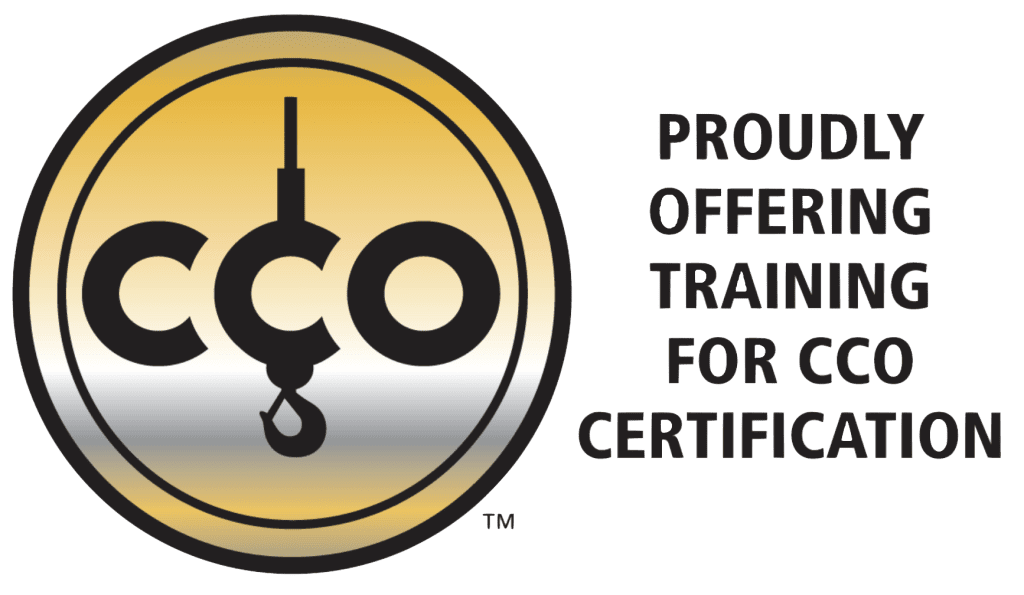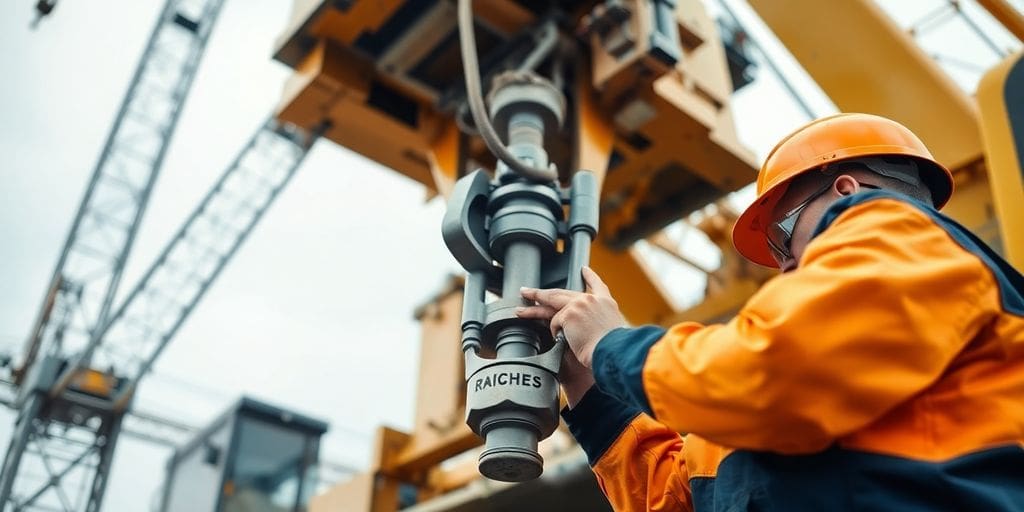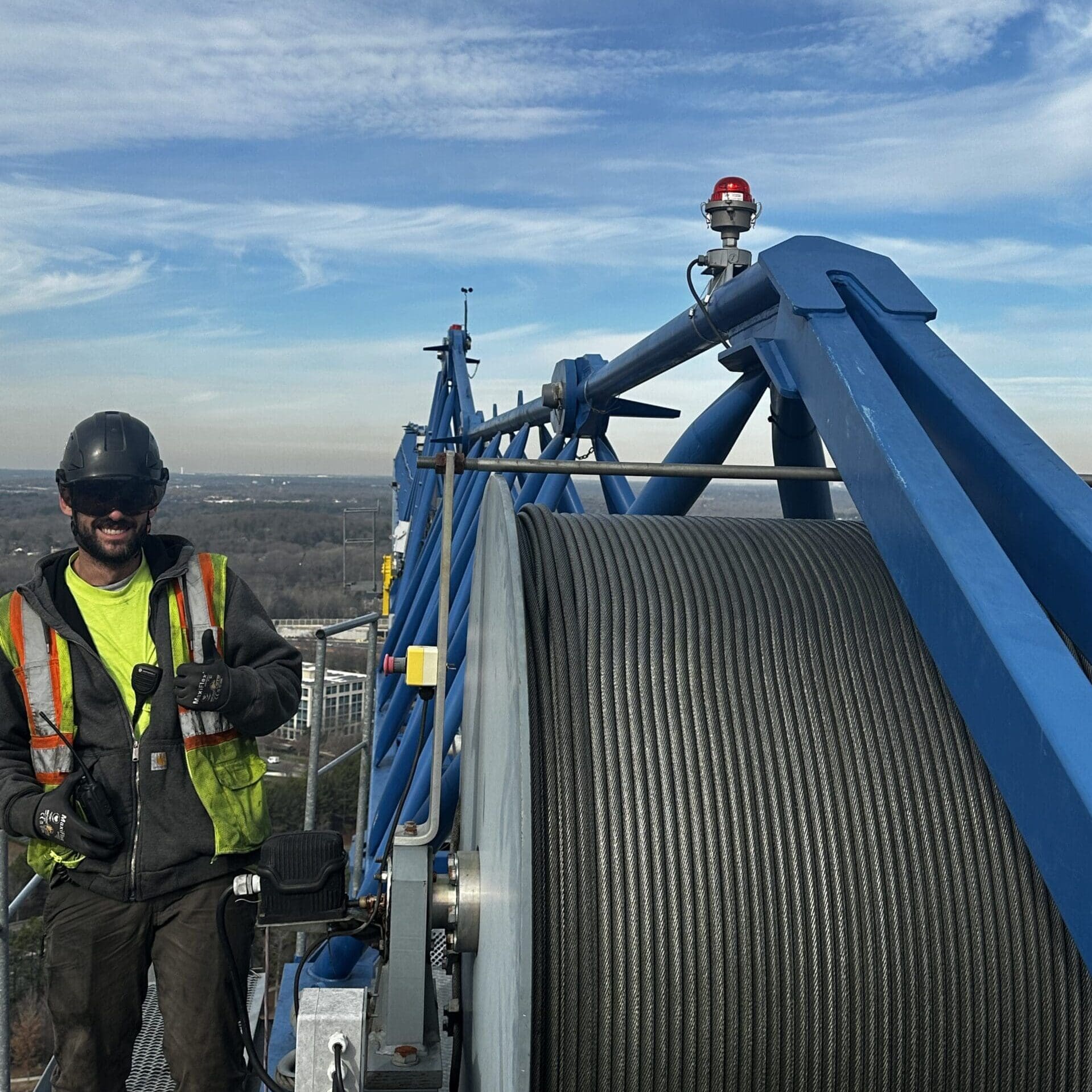Keeping your crane running smoothly is a big deal, right? It’s not just about getting the job done today, but also about making sure that expensive piece of equipment lasts for years. Think of it like taking care of your car – a little attention now can save you a lot of headaches and cash down the road. We’re going to break down some simple, straightforward ways to handle your crane maintenance so it stays in good shape.
Key Takeaways
- Regular inspections are your first line of defense to catch problems early.
- Proper lubrication of moving parts is key to reducing wear and tear.
- Well-trained operators who understand limits and pre-checks are vital.
- Keeping electrical systems in good order prevents operational hiccups.
- Addressing any issues, no matter how small, right away stops them from getting worse.
Mastering Crane Maintenance: A Proactive Approach
Keeping your crane in top shape isn’t just about fixing things when they break; it’s about being smart and getting ahead of potential problems. Think of it like taking care of your car – regular check-ups and a little attention can save you a lot of headaches and money down the road. A proactive maintenance plan is your best bet for making sure your crane stays reliable, safe, and ready to work for years to come. It’s all about being prepared and catching little things before they turn into big, expensive issues.
Implementing a Consistent Inspection Schedule
This is really the bedrock of good crane care. You need a system for checking things regularly. It doesn’t have to be overly complicated, but it does need to happen consistently. This helps you spot wear and tear or anything that looks out of place early on. Regular inspections are your first line of defense against bigger maintenance issues. It’s about looking for cracks in the frame, checking cables for fraying, making sure hydraulic systems aren’t leaking, and testing brakes and safety gear. Getting into the habit of these checks means you’re less likely to be surprised by a breakdown.
Understanding Daily, Monthly, and Annual Checks
Different parts of your crane need different levels of attention. Daily checks are usually quick visual inspections – fluid levels, obvious damage, safety features. Monthly checks go a bit deeper, looking at structural integrity and more detailed component wear. Then, you have your annual inspections, which are more thorough and often involve a qualified professional. It’s important to know what to look for in each type of check. For example, daily checks might focus on things like making sure the controls are responsive, while a monthly check might involve inspecting the hoist mechanism more closely. Knowing these differences helps you organize your maintenance efforts effectively.
Documenting All Inspection Findings
Don’t just look; write it down! Keeping records of every inspection is super important. This logbook becomes a history of your crane’s health. You can track when certain parts were checked, what issues were found, and what repairs were made. This information is gold for planning future maintenance and can even be useful if you ever need to sell the crane. Plus, it’s often a requirement for safety regulations. Having clear records helps you see trends, like if a particular component seems to wear out faster than expected, allowing you to adjust your maintenance strategy. It’s a good idea to keep these records organized and accessible, perhaps using a digital system or a dedicated binder. This way, you have a clear picture of your crane’s maintenance history, which is really helpful for planning future upkeep.
Being proactive with your crane’s maintenance means you’re not just reacting to problems; you’re actively preventing them. This approach saves time, money, and most importantly, keeps your team safe on the job site.
Keeping Your Crane Moving Smoothly with Lubrication
Keeping your crane moving smoothly really comes down to one thing: lubrication. It’s like giving your car an oil change, but for a much bigger, more powerful machine. When you properly lubricate all the moving parts, you cut down on friction, which in turn stops parts from wearing out too fast. Think of it as giving those metal-on-metal contact points a nice, slick cushion to glide on. This not only makes the crane run quieter and more efficiently but also saves you a ton of money down the line by preventing premature wear and tear on expensive components.
Lubricating High-Friction Components
There are specific spots on your crane that just love to grind against each other. These are your high-friction areas, and they need the most attention. We’re talking about things like:
- Bearings: These are everywhere, letting shafts and wheels spin freely. Without good grease, they can seize up or wear down quickly.
- Joints and Pivot Points: Think about where boom sections connect or where the crane rotates. These points need to move smoothly, and lubrication is key.
- Gears and Drive Systems: The gears that make everything turn need to be well-oiled to mesh properly and avoid damage.
Paying close attention to these areas during your regular maintenance checks is super important.
Following Manufacturer-Recommended Lubrication Practices
Every crane is a bit different, and the folks who built it usually know best. Your crane’s manual is your best friend here. It will tell you exactly what kind of grease or oil to use, how often to apply it, and where to put it. Using the wrong type of lubricant or skipping a scheduled lubrication can actually do more harm than good. It’s not just about slathering grease everywhere; it’s about using the right stuff in the right places at the right times. Sticking to these guidelines helps maintain the integrity of seals and prevents contamination. For wire rope care, using specialist lubricants designed for wire ropes that can penetrate effectively is a good idea to maximize the lifespan and precision.
Ensuring Proper Lubricant Types for Each Part
Not all lubricants are created equal. You wouldn’t use cooking oil on your car’s engine, right? The same applies to cranes. Different parts have different needs. Some might need a heavy-duty grease that sticks well, while others might need a lighter oil that can get into tight spaces. Your manual will specify the viscosity, temperature range, and additive packages for each lubricant. For example, high-temperature areas might need a synthetic grease that won’t break down, while lower-speed, high-load points might require a different formulation. Always double-check the specifications before you grab a can or tube. Using the correct lubricant means your crane’s parts will last longer and perform better.
The Crucial Role of Operator Training in Crane Longevity
When it comes to keeping your crane in good shape for the long haul, don’t underestimate the power of a well-trained operator. Seriously, these folks are on the front lines every day, and their actions directly impact how long your equipment lasts. Think about it – a skilled operator knows the ins and outs of safe load handling, which means less stress on the crane’s parts. They’re not just lifting things; they’re managing the equipment’s health with every move.
Training Operators on Safe Load Handling
This is all about teaching operators how to handle loads the right way. It involves making sure they understand how to properly balance the weight, avoid sudden starts or stops, and generally move with a smooth, controlled motion. It’s not just about getting the job done; it’s about doing it without putting unnecessary strain on the crane’s motors, cables, or structural components. Proper technique really does make a difference in reducing wear and tear.
Educating on Operating Within Crane Limits
Every crane has its limits, and operators need to know them inside and out. This means understanding the maximum weight capacity and never exceeding it. It also includes being aware of the crane’s operational speed and avoiding pushing it too hard. Knowing and respecting these boundaries is probably the single most important factor in preventing damage and extending the crane’s life. It’s like driving a car – you wouldn’t redline it constantly, right? The same principle applies here to keep your equipment running smoothly.
Emphasizing Pre-Operation Checks and Reporting
Before the crane even starts its day, operators should be doing a quick but thorough check. This isn’t just a formality; it’s a critical step. They should be looking for anything out of the ordinary – strange noises, loose parts, or anything that just doesn’t seem right. It’s important to have a clear process for reporting any issues they find. This way, minor problems can be spotted and fixed before they turn into major headaches. Getting this information back to the maintenance team quickly is key to preventing bigger problems down the road. You can find more information on best practices for crane maintenance at CSE crane maintenance.
Maintaining Electrical Systems for Optimal Crane Performance
The electrical system is basically the brain of your crane, controlling all the movements and functions. Keeping it in good shape means your crane will run smoothly and safely. Think of it like the wiring in your house; if it’s old or faulty, things can get pretty dicey.
Regularly Inspecting Wiring and Control Panels
It’s a good idea to give the wiring and control panels a good look-over regularly. You’re looking for any signs of wear and tear, like frayed wires, cracked insulation, or loose connections. Sometimes, dust and grime can build up in the control panels, which can cause problems. A quick wipe-down can go a long way. Don’t ignore any scorch marks or discoloration on wires or components, as these are clear indicators of overheating.
Ensuring Secure Connections and Proper Grounding
Loose connections are a common culprit for electrical hiccups. Make sure all wires are firmly attached where they should be. Proper grounding is also super important. It helps prevent electrical surges and keeps things safe if there’s a fault. It’s like having a safety net for your electrical system. If you’re not sure about grounding, it’s best to get a professional to check it out. You can find more info on keeping your crane in top shape at 512f.
Addressing Electrical Issues Promptly
If you notice anything odd – like a motor that’s not responding right, or a breaker that keeps tripping – don’t just let it slide. Small electrical problems can quickly turn into big, expensive ones if they aren’t fixed. It’s always better to address these issues right away. Sometimes it’s a simple fix, like tightening a connection, but other times you might need to call in a technician. Getting these things sorted promptly helps prevent bigger breakdowns and keeps your crane operational.
Protecting Your Crane Through Proper Storage
When your crane isn’t actively lifting, giving it a safe place to rest is just as important as the work it does. Proper storage helps protect your investment from the elements and accidental damage, which can really add up over time. Think of it like putting your car in the garage during a hailstorm – it just makes sense.
Selecting a Dry and Covered Storage Location
First things first, find a spot that keeps your crane out of the rain, snow, and direct sun. A simple shed or a covered bay works wonders. Moisture is a crane’s enemy, leading to rust and damage to electrical parts. Keeping it dry and shaded prevents a lot of headaches down the road. It’s a simple step that makes a big difference in how long your equipment lasts. For more on keeping your equipment in top shape, check out this guide on crawler crane maintenance.
Securing Moving Parts to Prevent Accidental Movement
Cranes have a lot of moving bits, and you don’t want them swinging around unexpectedly, especially if the crane is bumped or shifted. Before you park it, make sure to lock out any major moving components like the boom or trolley. This stops them from shifting and causing damage to the crane itself or anything nearby. It’s a safety measure that also protects the crane’s mechanics.
Using Protective Covers Against Dust and Debris
Even in a covered area, dust and small debris can settle on your crane, getting into nooks and crannies where they can cause wear or interfere with sensitive parts. Using breathable covers for the cabin, controls, and other exposed areas can keep things clean. It’s like giving your crane a cozy blanket, protecting it from the little things that can cause big problems over time. This simple act helps maintain the integrity of components and reduces the need for frequent deep cleaning.
Addressing Issues Promptly to Prevent Escalation
Sometimes, you might notice something a little off with your crane. Maybe it’s making a new noise, or a part seems to be moving slower than usual. It’s really important not to just ignore these little things. Think of it like a small leak in your roof; if you don’t fix it, it can lead to much bigger, more expensive problems down the road. Catching issues early is key to keeping your crane running smoothly and safely for a long time.
Recognizing Early Signs of Malfunction
Keep your ears and eyes open for anything unusual. This could be anything from strange sounds like grinding or squealing, to visual cues like excessive shaking or parts that look worn out. Even a change in how the crane operates, like slower movements or controls that don’t respond as quickly, should be a signal to investigate further. Paying attention to these subtle changes can help you spot trouble before it becomes a major breakdown. It’s about being aware of your crane’s normal behavior so you can quickly identify when something deviates from that.
Consulting Professional Technicians for Repairs
Once you spot a potential problem, the next step is to get it checked out by someone who really knows cranes. Trying to fix complex issues yourself might seem like a good idea to save money, but it can often lead to more damage or even unsafe conditions. Professional technicians have the right tools, knowledge, and experience to properly diagnose and fix the problem. They can also tell you if a part needs replacing and ensure it’s done correctly. For example, if you’re having trouble with the electrical system, a qualified electrician specializing in heavy machinery is your best bet. You can find good service providers through industry associations or by asking other companies who they trust for crane maintenance services.
Preventing Minor Issues from Becoming Major Problems
So, what’s the best way to handle these early warnings? It’s all about acting fast. If you hear a weird noise, don’t wait for it to get louder. If a control feels sticky, don’t just push harder. Get it looked at. This proactive approach saves you money in the long run because fixing a small worn bearing is way cheaper than replacing a whole damaged axle. It also keeps your crane available for work, reducing costly downtime. Basically, a little bit of attention now saves a whole lot of headaches later.
The Importance of Cleaning and Corrosion Prevention
Keeping your crane clean and free from corrosion is more than just making it look good; it’s a key part of keeping it running right and lasting longer. Dirt, dust, and grime can really gum up the works, especially in those tight spots and moving parts, leading to extra wear and tear. Think of it like not cleaning your car – eventually, things just don’t work as smoothly.
Regular Cleaning to Remove Dirt and Debris
Making cleaning a regular thing is pretty straightforward. You’ll want to get into a routine of wiping down the main surfaces, but also paying attention to the nooks and crannies. Focus on areas where dirt likes to collect, like around joints, hinges, and any place where grease and dust can mix. Cleaning the wheels or tracks is also important; you don’t want grit getting in there and causing problems.
Applying Protective Coatings to Vulnerable Areas
Once things are clean, it’s a good idea to add a layer of protection. For areas that are more likely to rust or get damaged by the elements, applying a good quality protective coating or paint can make a big difference. This creates a barrier against moisture and anything else that might cause corrosion. It’s like putting a raincoat on your crane’s sensitive parts.
Incorporating Corrosion Checks into Routine Inspections
When you’re doing your regular checks, make sure to specifically look for any signs of rust or corrosion. Early detection is key here. If you spot a little bit of rust starting, you can usually deal with it before it becomes a major issue. This might involve a bit of sanding and then reapplying a protective coating. Catching corrosion early saves a lot of headaches and money down the road. It’s also a good idea to check your wire ropes for any signs of rust or damage, as proper lubrication of crane cables is vital for reducing friction and preventing corrosion, especially in tough environments. keeping crane cables in good shape helps a lot.
Keep Your Crane Running Strong
So, there you have it. Taking care of your crane isn’t some big mystery. It’s really about being consistent with the basics – checking things over, keeping parts greased up, and making sure folks know how to use the equipment right. Think of it like taking care of your car; a little attention now saves a lot of headaches later. By sticking to a good maintenance routine, you’re not just keeping your crane in good shape, you’re also making sure your work gets done safely and without those annoying, costly interruptions. It’s a smart move for your business and your team.
Frequently Asked Questions
How often should I inspect my crane?
Think of it like taking your car for regular check-ups. You should look at your crane every day for anything obviously wrong, like loose parts or strange noises. Then, once a month, do a more detailed check of the main parts. Once a year, it’s best to have a pro give it a really thorough inspection and fix anything that looks worn out.
Why is lubricating my crane’s parts so important?
Keeping the moving parts well-oiled is super important! It stops them from rubbing too hard against each other, which can cause damage. Always use the type of oil or grease that the crane maker suggests, and put it on regularly.
Does operator training really help my crane last longer?
Yes, definitely! The person driving the crane needs to know how to use it safely. This means understanding how much weight it can lift, how to move loads smoothly, and what to do if something goes wrong. Good training helps prevent accidents and stops the crane from being used in ways that could break it.
How do I take care of the electrical parts of my crane?
Absolutely. The wires and the control box are like the crane’s brain and nerves. You need to make sure the wires aren’t frayed or damaged and that all the connections are tight and secure. If you see any sparks or if something isn’t working right, get it checked out fast.
What’s the best way to store my crane when I’m not using it?
When you’re not using the crane, find a spot that’s dry and covered, like a garage or under a roof. Lock any parts that can move so they don’t swing around by accident. Also, put covers over the crane to keep dust and dirt off it.
What should I do if I think something is wrong with my crane?
If you notice a funny sound, if a part is moving slower than usual, or if the crane just doesn’t seem right, don’t wait! Tell someone right away. Getting small problems fixed quickly stops them from turning into big, expensive repairs that could damage the whole crane.




